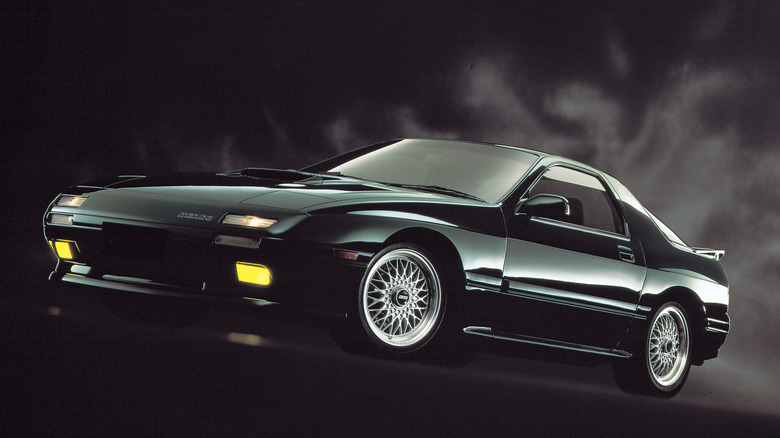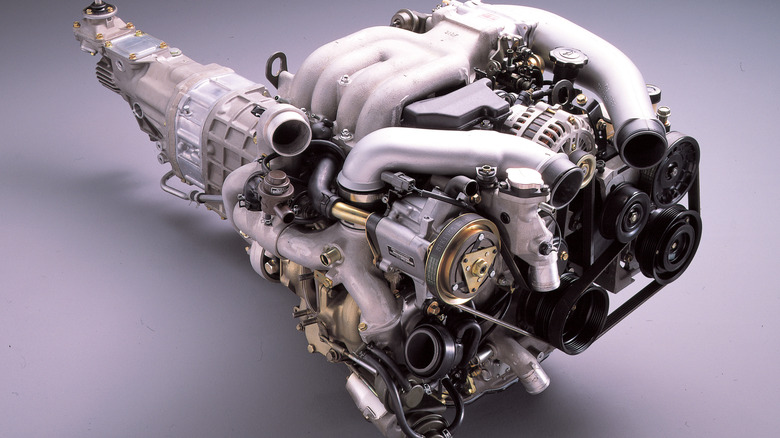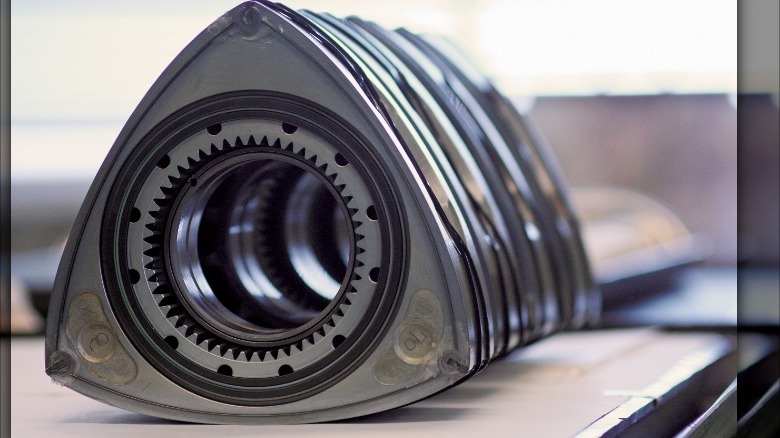Here's What Made The Mazda 13B Rotary Engine So Special
There are many different forms of internal combustion engines, but most use the same basic principle. Explosions in the combustion chamber move pistons up and down to spin a crankshaft. That rotational power is then moved through the transmission to the wheels, and that's what makes the car move. Most of the famous engines from automotive history use an inline, flat, or V-formation. Engines like the Toyota 2JZ, Porsche flat-six, and Chevy Small Block may have different strengths, weaknesses, and configurations. But all of those powerplants utilize conventional cylinders to move power down the line to melt off the rear tires and win races.
Mazda's 13B rotary engine is another animal entirely. It's an internal combustion engine, uses gasoline, and functionally makes a car move in the same way. Contrary to what car enthusiasts on the internet may say, it does not use magic to move a Mazda around. The 13B doesn't really have cylinders per se and instead uses an ingenious, if unconventional, method to turn gasoline into speed. It was used in one form or another most notably in the eccentric, yet still legendary Mazda RX-7 and Mazda RX-8 sports cars
The power of spinning triangles
The design for the rotary engine (also called the Wankel Rotary) was first pioneered by former Nazi scientist Felix Wankel in the early 1950s. Mazda started using an engine of that design in 1967 with the Mazda Cosmo Sport. Unlike a standard engine, the 13B uses an oval-shaped combustion chamber and a triangle-shaped rotor. On each corner or lobe of the triangle are rubber seals. When those seals meet the side of the chamber, it causes combustion and the rotor to spin, giving power to the transmission. To the driver, a rotary-powered car doesn't operate any differently. When you mash down the pedal, the vehicle moves forward.
The 13B is so revered today partly because it was different from the inline-6 or V-8 powerplants everyone is used to. It also put Mazda on the map as a major automaker, and Mazda itself even acknowledges that the company wouldn't exist as it does without the rotary. In addition to sports cars, the 13B powered everything from compact pickups to buses.
Rotary-powered Mazda RX-7s have broken six figures at auction. Aside from auction results, the cars themselves are serious performers. A Car and Driver review from 1984 found that the 13B-powered RX-7 was placid to drive, yet quick when it needed to be, and torquey through every gear.
The 13B can be credited as powering incredibly competent cars and keeping a significant automaker alive.


